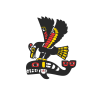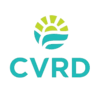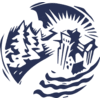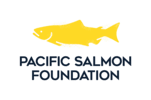By Dorian Geiger, Lake Cowichan Gazette, January 18, 2012
Something slimy and gross has overtaken Cowichan Lake — and it’s not the creature from the Black Lagoon.
Didymo, also known as ‘rock snot,’ is an invasive algae species that has invaded the Cowichan River.
Often mistaken for soggy toilet paper or slime, didymo comes in a variety of unsightly forms.
Although didymo is not toxic and poses no threat to drinking water, the algae growth is extremely repulsive-looking and can take the fun out of aquatic activities such as tubing or swimming.
Matthias Herborg is employed by the Government of British Columbia as a aquatic invasive species coordinator for the Ministry of the Environment.
Herborg calls didymo an “odd-ball species.”
“It always turns up in these really pristine, cold, fast flowing and low nutrient rivers. It behaves differently in that way” said Herborg.
Herborg said didymo has been known to Vancouver Island for well over a century but it was in the 1980s that it began behaving outside its range. At this time, didymo developed monstrous blooms and started to behave as an invasive species.
“It might have been in different places around the world but it never did have these blooms. Something happened to didymo on Vancouver Island which suddenly made it able to have these really dense blooms which are really noticeable,” explained Herborg.
Since, the algae has spread across the world. Vancouver Island is also credited as the point of origin responsible for the spread of invasive didymo.
From there it has spread across the world through the soles of waders, particularly felt-soled waders unfortunately a very effective way of spreading it.
Herborg said that the Vancouver Island’s fly fishing industry is suspect. Fishermen who use felt-soled shoes in didymo-effected water systems run a high risk of spreading the species to other habitats.
Didymo cells can easily attach themselves to the felt in shoes and can survive for a considerable amount of time.
“Because didymo is a chain of one cell of algae, one cell surviving is enough to promote its growth. They clone themselves so you just need one cell surviving,” said Herborg.
Herborg has known didymo to survive in such conditions for upwards of 40 days.
“Someone taking a fly fishing trip on Vancouver Island and then flying back to New Zealand or vice versa can easily spread that if they use felt soles.”
Several popular fly fishing destinations across the world have banned felt soles from their water systems and have moved towards rubber soles.
However, Parker Jefferson of the Cowichan Lake and River Stewardship Society is concerned about didymo’s effects on the Cowichan River’s fragile ecosystem.
Jefferson said didymo has the potential to overtake other algae species, most of which provide a feeding ground for local fish like salmon and trout.
Research has shown that phosphate is an effective counteractive measure in ridding water systems of didymo.
“There’s a practice that’s been in place for quite some time is adding fertilizer to rivers,” said Jefferson.
Jefferson noted that some research has indicated that placing a bag of organic fertilizer can be placed in the water system over a period of months. Fertilizer, and particularly phosphate, has the ability to repel didymo and prevent the algae from spreading.
“Essentially it is a burlap sack which has granules of time-release fertilizer inside of it. It slowly releases the fertilizer and nutrients into the water,” he said.
Jefferson wanted to be clear that he is not advocating the use of fertilizer but said it has been known to be effective.
Jefferson said that adding nutrients may have a two-pronged purpose in terms of also boosting biodiversity.
“Just around where these bags are you have tremendous algae growth and downstream from there. Algae supports bugs and they support the hatching salmon fry and allow them to grow to a size where they can survive,” added Jefferson.
However, due to the significant amount of rain Vancouver Island receives such nutrients are flushed out of water systems fairly rapidly.
Jefferson said that the disappearance of salmon in Vancouver Island water systems due to logging practices or other environmental disasters has helped facilitate the growth and spread of didymo.
The depletion of salmon inflicts low nutrient levels in rivers, which are conditions that foster the growth and spread of didymo.
Jefferson, along with CLRSS president Gerald Thom will be attending a Cowichan Stewardship rountable in Duncan on Jan. 19 to discuss the didymo problem in the Cowichan Valley.
The discussion will be headed by Nanaimo scientist Dr. Max Bothwell. Bothwell is one of Canada’s leading researchers on the topic of didymo.
Jefferson noted that there is a possibility that Bothwell, who performs some of his didymo research at the Vancouver Island University in Duncan, may recruit a graduate student to the Cowichan Lake-area this summer to conduct more research on the algae species.
 Email
Email



